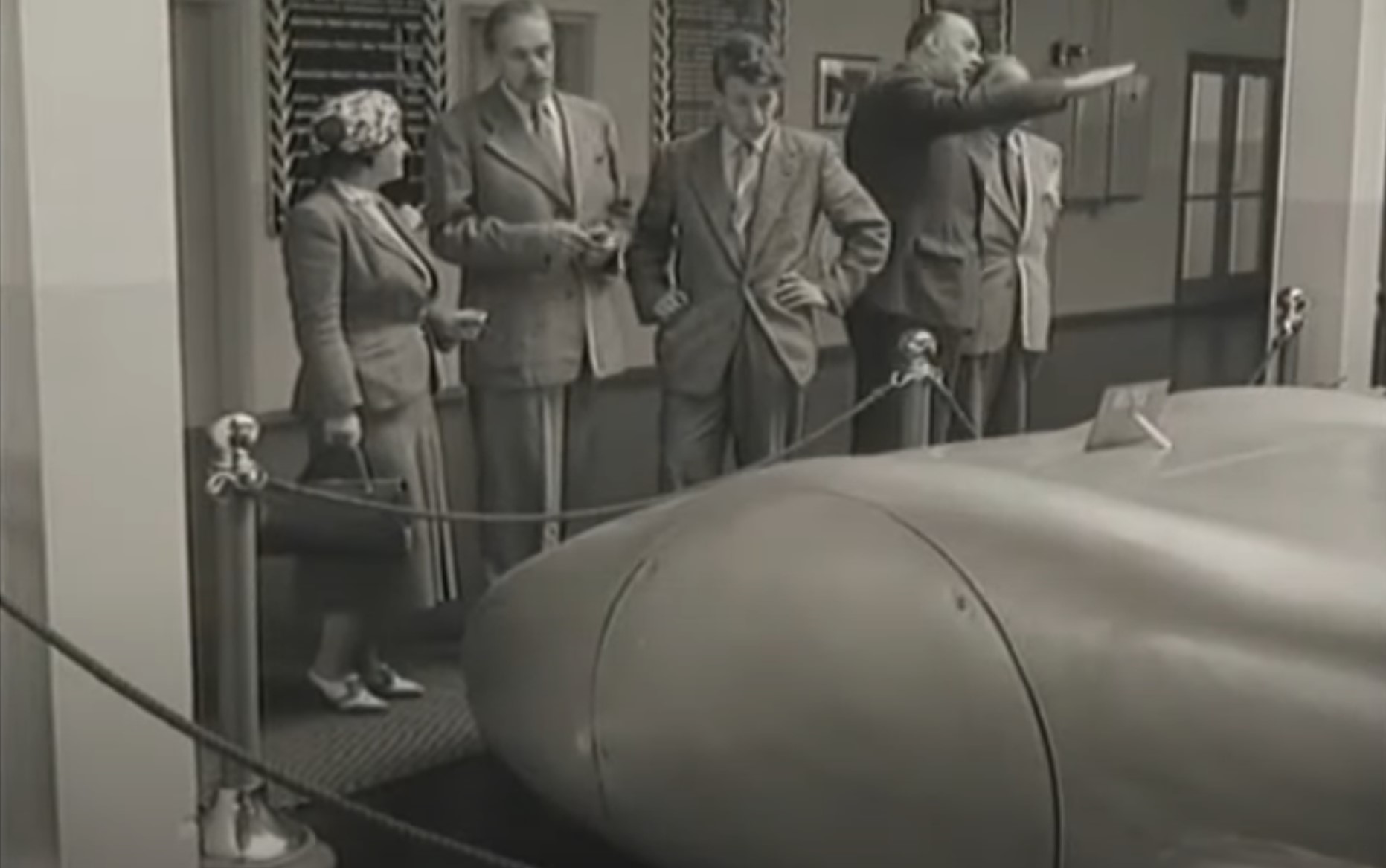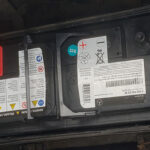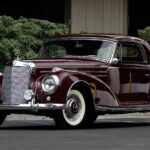If you’re a fan of luxury cars like me, then get ready for a treat. And even if you’re not, buckle up and prepare to be amazed because we’re diving into the story of how much a Mercedes cost in Europe after World War II.
I know what you might be thinking – “Why on earth would I want to know how much a car costs after a war?” But let me tell you, there’s more to this tale than just numbers and figures.
We’re talking about the rise of one of the most iconic car brands in history and their challenges in rebuilding after a catastrophic global event.
And who better to guide us through this journey than me, a classic Mercedes lover with a wealth of knowledge and passion for these gorgeous vehicles?
I can’t wait to share the incredible story of post-World War II Mercedes-Benz in Europe.
So, without further ado, let’s take a trip back in time and discover the fascinating world of Mercedes-Benz pricing in Europe after World War II.
Introduction to the Mercedes-Benz Brand
As I cruised down the freeway in my sleek, silver Mercedes-Benz, I couldn’t help but feel a sense of luxury and sophistication. There’s something about this iconic brand that just exudes class and elegance. But where did it all begin?
Join me as I embark on a fascinating journey through the history of Mercedes-Benz.
The story started in 1886 when Karl Benz invented the world’s first gasoline-powered car. A few years later, in 1901, Benz merged with Daimler Motors to create the Mercedes-Benz brand we know and love today.
The name Mercedes comes from the daughter of an Austrian businessman who raced cars and achieved great success.
Over the years, Mercedes-Benz has become synonymous with high-end luxury vehicles. Every aspect of a Mercedes-Benz vehicle screams quality, from its signature grille to its attention to detail. And it’s not just about looks – these cars are built to last. The brand’s slogan is “The Best or Nothing.”
Production And Sales Before World War II
Picture this: it’s the 1930s, and the world is on the brink of war. But amid all this chaos, Mercedes-Benz was busy producing some of the most luxurious and innovative cars of the time. As I dug deeper into the history of this iconic brand, I was fascinated by its production and sales before World War II.
Despite the economic struggles of the time, Mercedes-Benz produced some of its most iconic models during this period.
For example, the 1936 Mercedes-Benz 540K was a masterpiece of engineering and design, with a top speed of 110 miles per hour and a price tag that would make your jaw drop.
But it wasn’t just about producing high-end vehicles – Mercedes-Benz also focused on sales. The brand had a solid European presence, with dealerships in cities like Paris and London. They even had a showroom in New York City, catering to the growing demand for luxury cars in the United States.
Unfortunately, World War II halted production, as Mercedes-Benz shifted its focus to military vehicles. But even during this tumultuous time, the brand innovated, producing the first turbojet engine for an aircraft in 1941.
Impact of World War II on Mercedes-Benz
As I continue my journey through the history of Mercedes-Benz, I cannot help but be struck by the impact of World War II on this iconic brand. Like many companies, Mercedes-Benz was forced to shift its focus to military production during the war years.
But the impact went far beyond production. After the war, Mercedes-Benz faced a new challenge: rebuilding its reputation in the face of wartime associations. As a German company, many in the international community viewed the brand with suspicion.
Despite these challenges, Mercedes-Benz remained dedicated to innovation and quality. In the post-war years, they introduced new models like the 300 SL, quickly became a classic.
The brand also made a bold move by entering the world of Formula One racing, a decision that would pay off in spades.
Today, Mercedes-Benz is once again known as a symbol of luxury and sophistication. Still, the impact of World War II on the brand’s history is a reminder of the enduring legacy of that time.
Post-World War II Mercedes-Benz in Europe
In the years following the war, Mercedes-Benz faced the daunting task of rebuilding its reputation and regaining the trust of customers who may have associated the brand with wartime Germany.
But the company rose to the challenge, introducing new models like the 180 and the 190 SL that quickly gained popularity.
And it wasn’t just about the cars themselves – Mercedes-Benz also focused on building strong relationships with customers and dealers, investing in customer service and support.
These efforts paid off, as Mercedes-Benz quickly became one of Europe’s most popular luxury car brands. The brand’s reputation for quality and reliability was unmatched, and customers flocked to dealerships across the continent.
Today, Mercedes-Benz is a global brand with a presence in global markets. The brand’s enduring legacy and commitment to excellence are evidenced by its post-World War II success in Europe.
Factors Influencing Mercedes-Benz Pricing in Europe
Several factors influence the cost of these luxury cars. For starters, there’s the cost of production – Mercedes-Benz has a reputation for its meticulous attention to detail and its use of high-quality materials, which may result in higher manufacturing costs.
But it’s not just about the production costs. Mercedes-Benz also invests heavily in research and development, constantly innovating and pushing the boundaries of automotive technology. This commitment to innovation comes at a price and is reflected in the cost of their vehicles.
Then there’s the issue of taxes and tariffs. In Europe, cars are subject to various taxes and fees, including VAT, import duties, and road taxes. These costs can add up quickly and are ultimately passed on to the customer.
Of course, there’s also the matter of supply and demand. Mercedes-Benz vehicles are in high demand in Europe, and the brand is known for its exclusivity and prestige. This means that prices can be higher simply because of the brand’s reputation and popularity.
Market Position in Europe After World War II
Despite the challenges of rebuilding after the war, Mercedes-Benz established itself as one of the top luxury car brands on the continent.
One of the key factors in the brand’s success was its commitment to quality and innovation. Mercedes-Benz was not content to simply rest on its laurels – it continued to push the boundaries of automotive technology, introducing new features and designs that set it apart from competitors.
Another factor was the brand’s reputation for exclusivity and prestige. Mercedes-Benz vehicles were seen as a status symbol, a sign of success and sophistication that few could afford. This aura of exclusivity further cemented the brand’s position in the European market.
But it wasn’t just about the cars themselves – Mercedes-Benz also invested heavily in customer service and support, building strong relationships with dealers and customers. This dedication to the customer experience helped create a loyal fan base that would sustain the brand for years.
Today, Mercedes-Benz remains one of the most iconic luxury car brands in Europe, with a reputation for unmatched quality, innovation, and exclusivity.
Evolution of Mercedes-Benz Pricing in Europe After World War II
After the ravages of World War II, Europe was left grappling with the ruins and the severe economic consequences that followed. Luxury cars became a distant dream for the majority, as people struggled to recover and rebuild their lives. Nevertheless, Mercedes-Benz persisted in manufacturing luxury vehicles, primarily catering to affluent individuals and government officials.
In the 1950s, the average monthly salary in the United Kingdom was approximately £8.50. During the same period, the iconic Mercedes-Benz 300SL “Gullwing” commanded a price tag of around £4,500. To put this into perspective, purchasing the “Gullwing” would have required saving up for approximately 530 months or roughly 44 years’ worth of salaries for an average person in the UK.
Similarly, in other European countries, the financial divide between salaries and the cost of Mercedes-Benz cars was substantial:
France: In the 1950s, the average monthly salary in France was approximately 20,000 francs, while the Mercedes-Benz 300SL “Gullwing” was priced at around 1,000,000 francs. This meant that it would have taken around 50 months or over 4 years of salary for an average individual to afford the “Gullwing.”
Germany: During the 1950s, the average monthly salary in Germany was roughly 500 Deutsche Marks. The Mercedes-Benz 300SL “Gullwing” had a price tag of around 25,000 Deutsche Marks. To purchase the car, an average German would have needed to save their entire salary for approximately 50 months or around 4 years.
These comparisons demonstrate the significant financial challenge that ordinary individuals faced in owning a Mercedes-Benz luxury car during that period. The high prices of these prestigious vehicles far exceeded the earning capacity of the average person, making them a symbol of luxury accessible only to a privileged few.
Despite the economic obstacles, Mercedes-Benz’s commitment to producing innovative and high-quality vehicles endured. Today, the brand stands as one of the foremost luxury car manufacturers globally, having overcome the financial barriers of the post-war era and maintaining its reputation for excellence and opulence.
Conclusion
In conclusion, the legacy of Mercedes-Benz in Europe post-World War II is a testament to the enduring appeal of this iconic brand.
Mercedes-Benz has had a lasting impact on the automotive industry, beginning as a symbol of German engineering and innovation and evolving into one of the foremost luxury car brands globally. Its mark on the industry is indelible, and its history is a testament to its ongoing commitment to excellence.
As a classic Mercedes lover and blogger, I invite you to continue exploring the rich history of this iconic brand on my blog
and join me on a journey through the history of this legendary brand.



